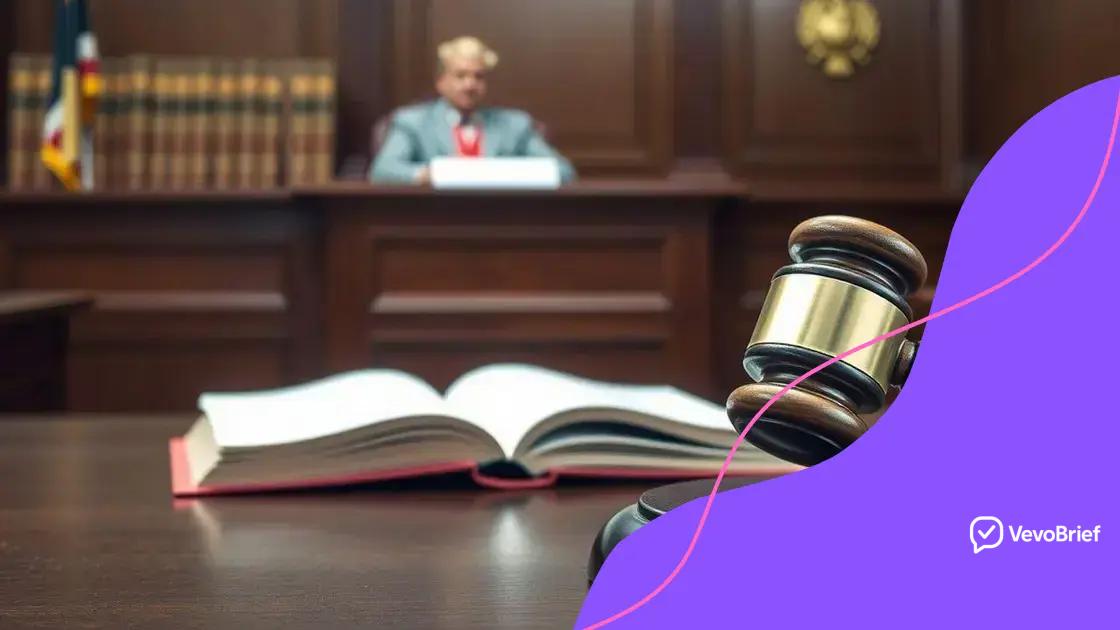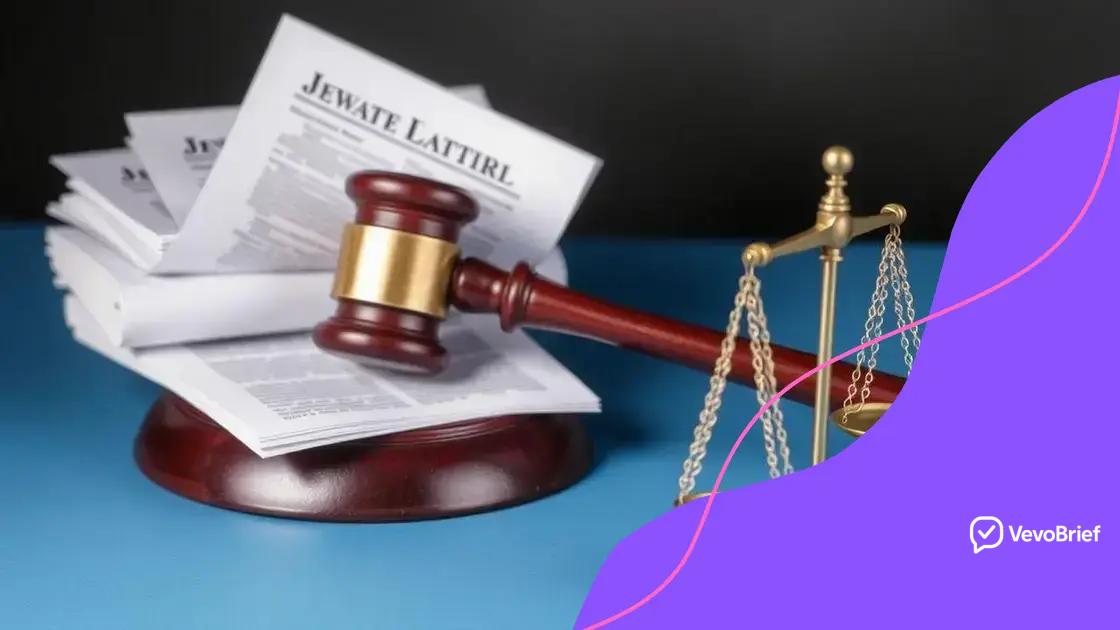Sentencing in major white-collar crime cases raises questions

Sentencing in major white-collar crime cases is influenced by factors such as the severity of the crime, the defendant’s history, public perception, and the impact on victims, shaping how justice is administered.
Sentencing in major white-collar crime cases often sparks debate and curiosity. What drives the disparities in punishment, and how do they shape our legal landscape? Let’s dive into the intriguing complexities surrounding these high-profile cases.
Understanding white-collar crime: Definitions and examples
Understanding white-collar crime is essential to grasp the complexities of our legal system. These crimes differ significantly from violent crimes and are often committed by individuals in business or professional settings. Let’s explore the definitions and some critical examples that illustrate the nature of these offenses.
What is White-Collar Crime?
White-collar crime refers to non-violent crimes committed for financial gain. These offenses typically occur in corporate, commercial, or professional environments. Unlike traditional crimes, white-collar crimes can be more challenging to detect, making them especially concerning.
- Fraud: Manipulating facts or figures to deceive others.
- Embezzlement: Misappropriating funds for personal use.
- Insider Trading: Trading stocks based on non-public information.
Each of these examples demonstrates how trust and authority can be exploited for personal gain. The repercussions often extend beyond the immediate victims, affecting entire communities and economies.
Notable Examples of White-Collar Crime
Several high-profile cases have brought white-collar crime into the spotlight, showing its impact on society. One of the most notorious examples is the Enron scandal, where executives hid massive debts to maintain stock prices.
- Enron: Executives engaged in accounting fraud and misleading investors.
- Bernie Madoff: Ran a Ponzi scheme that defrauded thousands of investors.
- Volkswagen: Involved in emissions cheating to mislead regulators and customers.
These cases highlight the severe consequences of white-collar crime, leading to legal reforms and a renewed focus on regulation. Understanding these definitions and examples is crucial for recognizing the broader implications of such actions.
Key cases that shaped sentencing guidelines
Key cases that shaped sentencing guidelines play a vital role in how justice is served in white-collar crime. These landmark cases have influenced not only the legal outcomes for defendants but also the public’s perception of these crimes. Understanding these cases helps us see how they have changed the landscape for future sentencing.
The Fraud Enforcement and Recovery Act
Enacted in 2009, this act aimed to address the increasing prevalence of financial fraud and provides regulators with the necessary tools to prosecute offenders. It emphasized the need for harsher penalties to deter financial crimes.
- Increased penalties for mortgage fraud.
- Enhanced resources for investigating financial crimes.
- Focus on restitution for victims.
This act set a precedent for more severe consequences, leading to a shift in how courts approach sentencing in these types of cases.
The Sarbanes-Oxley Act
Following the Enron scandal, the Sarbanes-Oxley Act of 2002 introduced significant reforms aimed at enhancing corporate accountability. This legislation implemented stricter penalties for corporate fraud and misrepresentation.
- Required CEOs to certify the accuracy of financial statements.
- Established the Public Company Accounting Oversight Board (PCAOB).
- Created stronger protections for whistleblowers.
The act fundamentally changed how companies operate, influencing judges when determining sentences for white-collar crimes.
Another notable case is the sentencing of Bernie Madoff, one of the largest Ponzi scheme operators in history. His case resulted in a 150-year prison sentence, underscoring the judiciary’s intent to impose substantial penalties for massive fraud.
As society evolves, so do the standards for sentencing in white-collar crime. Key cases and acts provide a framework that continues to shape the judicial approach to these offenses.
Factors influencing sentencing in white-collar cases

Factors influencing sentencing in white-collar cases are crucial for understanding how the judicial system approaches these unique crimes. Unlike violent crimes, the motives and consequences behind white-collar crimes often lead to different considerations during sentencing.
Nature of the Crime
The specific characteristics of a white-collar crime play a significant role in determining the sentence. For example, a crime involving a large financial loss or multiple victims tends to receive harsher penalties. Other factors include whether the crime was premeditated and the extent of deception involved.
- Severity of the offense.
- Duration over which the crime occurred.
- Impact on victims and the economy.
These elements contribute to how judges perceive the crime’s seriousness, which can directly influence sentencing.
Defendant’s Criminal History
A defendant’s past behavior is another vital factor in sentencing decisions. If an individual has a history of fraudulent activity, judges are more likely to impose stricter sentences. Previous non-violent offenses might also impact the perception of the defendant.
For instance, someone with a clean record may receive a lighter sentence than someone with prior convictions. This assessment encourages a sense of accountability and justice.
Public Sentiment
The public’s perception of a case can also sway judges during sentencing. High-profile white-collar crimes often attract significant media attention, influencing the public’s opinion on what constitutes an appropriate punishment.
- Media coverage can lead to increased public pressure.
- Social movements may call for stricter penalties.
- Public opinion can shape legislative changes.
Ultimately, these factors intertwine to affect how sentences are handed down in white-collar cases, highlighting the complexities involved in delivering justice.
The role of public perception in sentencing
The role of public perception in sentencing is a critical factor that can influence judicial decisions, especially in white-collar crime cases. When a crime receives significant media attention, it can shape how the public views not only the crime but also the perpetrator. This perception can indirectly affect the outcomes of legal proceedings.
Impact of Media Coverage
Media coverage plays a powerful role in shaping public opinion about white-collar crime. When high-profile cases are reported, they often focus on the emotional aspects and the losses suffered by victims. This creates a narrative that can sway public sentiment.
- High visibility can lead to increased public outrage.
- Negative portrayals of defendants may pressure judges to impose harsher sentences.
- Victim testimonies highlighted in the media can amplify the emotional weight of a case.
As public outrage grows, judges may feel compelled to respond with stricter penalties to restore faith in the judicial system.
Social Movements and Public Pressure
Beyond media, social movements also play a significant role in shaping sentencing outcomes. When the community rallies around a cause associated with a crime, it can create a climate of demand for justice. For example, campaigns demanding justice for victims can push for legislative changes.
- Activism can lead to demands for specific reforms in sentencing guidelines.
- Public protests often call attention to perceived injustices.
- Engagement in community discussions can shift the conversation on just punishments.
Judges are human and often influenced by the community’s voice. Therefore, they may take public sentiment into consideration when determining appropriate sentences.
Understanding the relationship between public perception and sentencing highlights the complexities of justice in white-collar crime. The judicial process is not isolated from societal views, making it essential to recognize how these dynamics play out in the courtroom.
Future trends in white-collar crime sentencing
Future trends in white-collar crime sentencing are shaping how the justice system will respond to financial crimes in the years to come. With the rise of technology and changing societal expectations, the landscape of white-collar crime is rapidly evolving.
Increased Use of Technology
As criminals become more sophisticated, so must the judicial process. Courts and lawmakers are starting to recognize the need for advanced tools to identify and prosecute white-collar crimes. With the integration of technology in investigations, we will likely see more comprehensive evidence being presented in court.
- Data analytics can track financial fraud patterns.
- Blockchain technology helps to verify transactions.
- Artificial intelligence will assist in detecting anomalies.
These advancements may lead to more detailed and accurate sentences based on clear evidence of wrongdoing.
Restorative Justice Approaches
Restorative justice is gaining traction as a method for handling various crimes, including white-collar offenses. This approach focuses on repairing the harm caused by the crime rather than solely punishing the offender. Victim impact statements may become more influential in sentencing decisions.
In the future, we might see judges considering how offenders can make amends, such as through restitution or community service opportunities that benefit the victims directly.
Globalization and Jurisdictional Issues
As businesses operate on a global scale, the challenges of jurisdiction become more complex. Crimes that span multiple countries often lead to significant resource burdens on law enforcement and courts. Future trends may include international collaborations to address these issues effectively.
- Stronger international laws to govern cross-border offenses.
- Agreements for data sharing among countries.
- Increased training for law enforcement on international financial crimes.
These developments will likely create a more unified response to white-collar crime, changing how sentencing is approached across different jurisdictions.
The future of sentencing for white-collar crime is evolving rapidly. Factors like technological advancements, public perception, and the global landscape are all contributing to these changes. As laws adapt to address the complexities of financial crimes, we can expect increased scrutiny and innovative approaches to justice. Understanding these trends is essential for both the legal community and the public, as they will shape how accountability and justice are maintained in an ever-changing world. Emphasizing restoration and collaboration among international bodies may lead to fairer outcomes for victims and offenders alike.
FAQ – Frequently Asked Questions about Sentencing in White-Collar Crime
What are the key factors influencing sentencing in white-collar crime?
Key factors include the severity of the crime, the defendant’s criminal history, public perception, and the impact on victims.
How does public perception affect sentencing outcomes?
Public sentiment can pressure judges to impose stricter sentences, especially in high-profile cases covered by the media.
What role does technology play in future sentencing trends?
Technology, such as data analytics and AI, will enhance evidence collection and could lead to more precise sentencing decisions.
What is restorative justice and how is it applied in white-collar crime?
Restorative justice focuses on repairing harm caused by crimes rather than just punishing offenders, offering victims a chance to express their impact.
